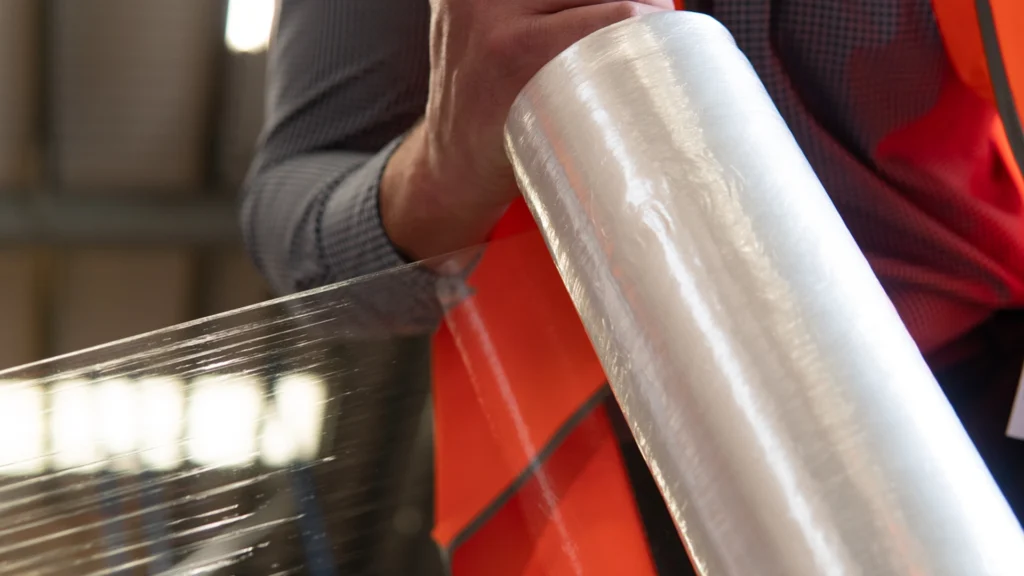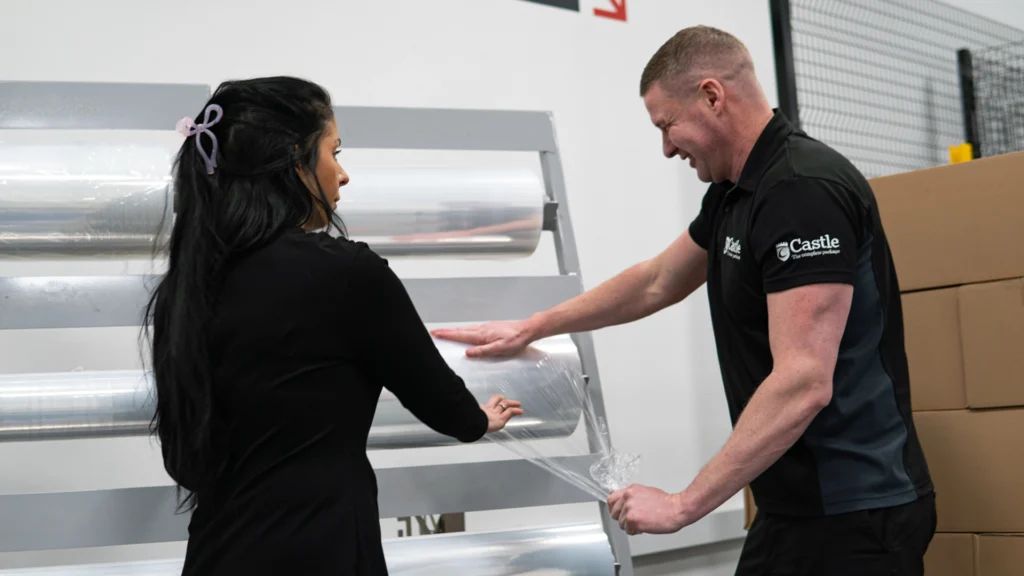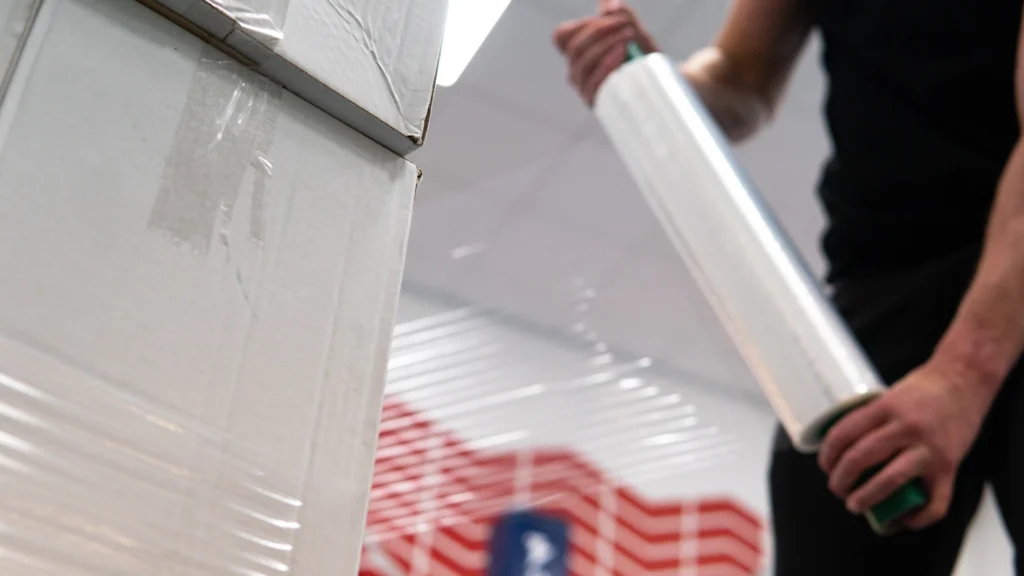Table of Contents
Estimated read time: 9 mins
INTRODUCTION
When you see a pallet being wrapped, it’s easy to assume the film’s job is simple: cover the load and keep it looking neat. In reality, the science behind how stretch film performs goes much deeper. One of the least talked about factors is film memory – and it could be the difference between a pallet arriving intact or arriving in pieces.

WHAT IS FILM MEMORY?
Stretch film memory refers to the film’s ability to hold onto the tension created when it’s stretched around a pallet. Unlike a simple elastic band that wants to snap straight back, stretch film “remembers” its stretched state and continues to apply force against the load.
That constant force is what keeps products tightly bound together through handling, storage, and transport. Without it, pallets would loosen, shift, and eventually fail.
Why It Matters in Practice
Think about what happens in the real world. Pallets don’t just sit in a corner waiting to be picked up. They’re:
Lifted and lowered by forklifts.
Jostled and tilted in trucks, ships, and containers.
Exposed to vibration over thousands of road miles.
If film memory isn’t strong enough, the wrap relaxes and the load can “walk” away from the pallet deck. That’s when damage occurs – and with it comes cost, lost time, and potential risk to operators and end customers.

MEMORY V ELASTICITY
It’s easy to confuse film memory with elasticity, but they’re not the same. Elasticity is the ability to stretch and then snap back. Memory, on the other hand, is about staying in that stretched state and continuing to apply pressure.
A film that’s too elastic will simply loosen again. A film with strong memory holds its shape and containment force over time.
HOW MEMORY SUPPORTS SUPPLY CHAIN PERFORMANCE
Film memory underpins almost every benefit businesses expect from pallet wrap. Strong memory means:
Consistency: loads stay stable for longer, whether in storage or in transit.
Efficiency: fewer re-wraps and less wasted film.
Cost savings: fewer product damages, claims, and returns.
Confidence: reassurance that loads will perform even in tough conditions.
In short, memory is what makes pallet wrap reliable – not just in the warehouse, but all the way through to delivery.

TESTING FOR FILM MEMORY
Here’s the challenge: memory isn’t something you can see by eye the moment a pallet comes off the machine. Two pallets can look identical at first, but behave very differently after a few days in storage or a bumpy journey on the road.
That’s why proper testing is so important. At Castle’s Load Stability Testing Centre, we use specialist equipment to:
Measure containment force at different points on the load.
Simulate vibration, tilt, and acceleration that mimic real-world journeys.
Track how film performance changes over time, not just at the moment of wrapping.
This data shows whether a film’s memory is strong enough to stand up to the realities of your supply chain.
Why This Matters for Your Business
The costs of poor film memory are rarely measured in a roll of film. They’re measured in:
Damaged goods arriving at distribution centres.
Rejected loads at retail hubs.
Operator frustration when pallets fail in the warehouse.
Brand reputation when damaged product reaches the end customer.
By focusing on memory, you’re not just reducing the risk of product damage – you’re improving efficiency, cutting hidden costs, and protecting your reputation.


What matters most isn’t just how tight a pallet looks when it leaves the wrapper — it’s whether the film can hold its force days or weeks later. That’s the difference between stability and risk.

LIAM BLAND
TECHNICAL CONSULTANT


CONCLUSION
The difference at castle
With nearly three decades in the packaging industry, Castle has invested in technology to test and optimise film performance under real conditions. Our state-of-the-art Load Stability Centre allows us to assess not just how a film behaves on day one, but how it holds up days or weeks later.
This unique insight means we can recommend films and wrapping setups that give you:
The right containment at the lowest possible film weight.
Confidence that your loads won’t loosen mid-journey.
A balance between stability, cost-efficiency, and sustainability.
Key takeaways
Film memory is the hidden factor that keeps loads secure long after wrapping.
It’s not the same as elasticity – strong memory means the film continues to apply force over time.
Memory matters most under stress, such as vibration, tilt, and long-distance transport.
You can’t spot it by eye – proper testing is needed to measure it.
Better memory means fewer damages, lower costs, and more reliable supply chains.
